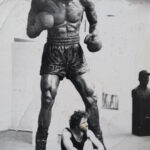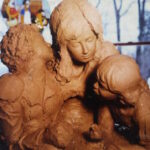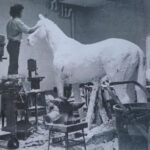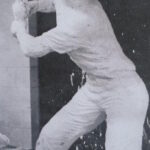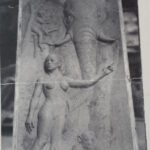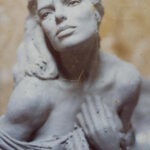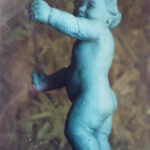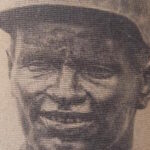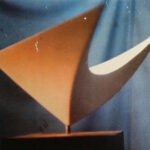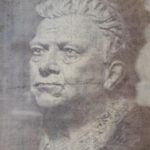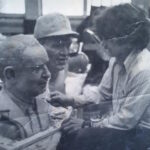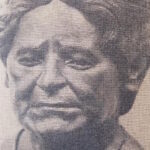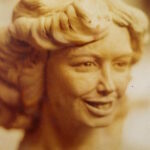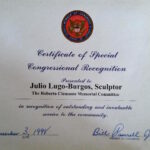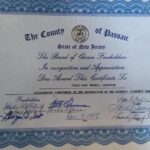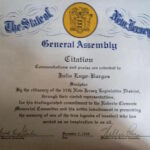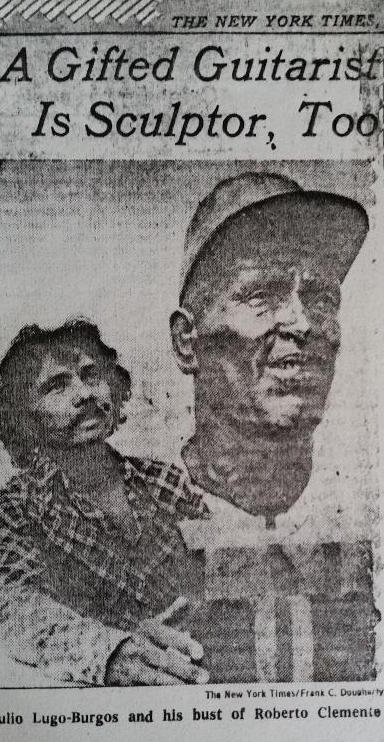
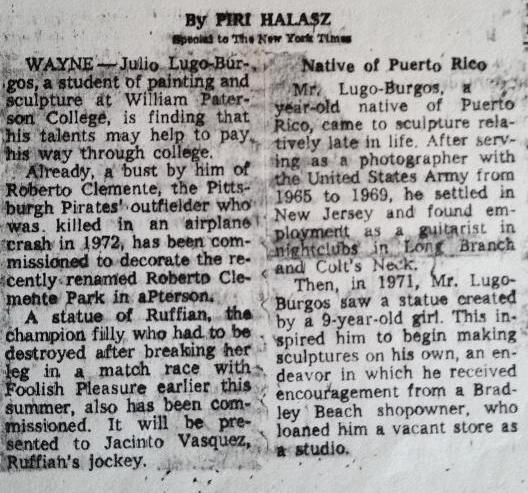
Newspaper article: A Gifted Guitarist Is Sculptor, Too
By Piri Halasz Special to The New York Times
Aug 31, 1975
WAYNE — Julio Lugo-Burgos, a student of painting and sculpture at William Paterson College, is finding that his talents may help to pay his way through college. Already, a bust by him of Roberto Clemente, the Pittsburgh Pirates’ outfielder who was killed in an airplane crash in 1972, has been commissioned to decorate the recently renamed Roberto Clemente Park in Paterson.
A statue of Ruffian, the champion filly who had to be destroyed after breaking her leg in a match race with Foolish Pleasure earlier this summer, also has been commissioned. It will be presented to Jacinto Vasquez, Ruffian’s Jockey.
Native of Puerto Rico
Mr. Lugo-Burgos, a 34-year-old native of Puerto Rico, came to sculpture relatively late in life. After serving as a photographer with the United States Army from 1965 to 1969, he settles in New Jersey and found employment as a guitarist in nightclubs in Long Branch and Colt’s Neck. Then, in 1971, Mr. Lugo-Burgos saw a statue created by a 9-year-old girl. This inspired him to begin making sculptures on his own, an endeavor in which he received encouragement from a Bradley Beach shopowner, who loaned him a vacant store as a studio.
In 1972, Mr Lugo-Burgos entered William Paterson, using his G.I. benefits and winning a scholarship. He planned to major in biology, but the lure of art was too strong. Last fall, he enrolled in his first sculpture course. He has now switched his major to painting and sculpture.
First Commission
Mr. Lugo-Burgo’s first commissioned sculpture was a bust of Fred de Sapio, former Mayor of Hoboken, who died in 1072. The purchaser was Dr. Gerald de Sapio, the Mayor’s son, who met Mr. Lugo-Burgos earlier this year while the artist was playing the guitar at Yvonne’s Rhapsody in Blue, an oceanfront restaurant in the West End section of Long Branch.
The bust was excecuted from photographs of the late Mayor. Mr. De Sapio is also the patron who is commissioning the statue of Ruffian. The Puerto Rican Marching Society of Paterson is commissioning the bust of Mr. Clemente.
Mr. Lugo-Burgos, while adept at modeling and sculpting, will still have to rely on assistance from William Fineran and William Muir, his teachers at William Paterson, for the difficult task of casting the sculpture in bronze. Nevertheless, his ambition continues to be great.
“I want to do big statues,” he said. “What I would really like is to do the astronauts next.”

Newspaper article 1976
A portrait of the man for whom Wm. Paterson College was named can now be seen by every student and visitor to the Wayne, New Jersey campus, thanks to the sculptural artistry of Julio Lugo-Burgos, a Wm. Paterson college senior art student.
The rediscovery of a portrait by the New Jersey Bank and the State Historical Society prompted Julio’s commission by the college for a bronze bust of Wm. Paterson, the second governor of New Jersey.
Julio, who first attended the college in 1972 for a degree in the natural sciences, says that he first became interested in sculpture by accident through an art elective course.
Since then, he has done many commissioned works, one of the most noted being a bust of the late Roberto Clemente, working on a larger than life-size statue of Clemente in batting stance.
One of Julio’s most touching commissions has been to do the unfortunate race horse, Ruffian. In a full-size sculpture, Julio depicts the young, spry thoroughbred. Ruffian had never lost a race, but had to be destroyed after an ankle injury in a special match race last summer at the Belmont Raceway.
Looking toward the future, Julio hopes to work his way
through graduate school by selling his sculptures
while majoring in painting and sculpture.
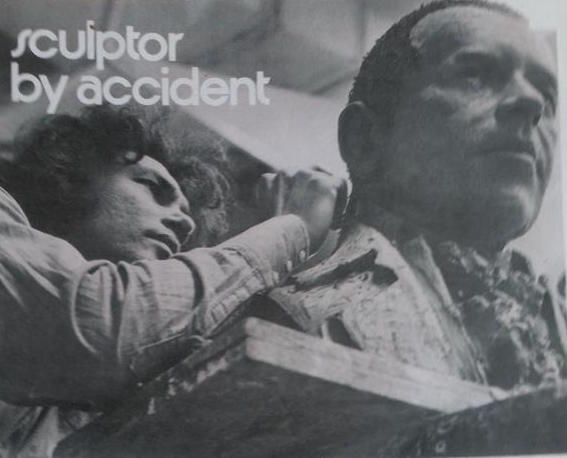
Newspaper article: Big in size and talent
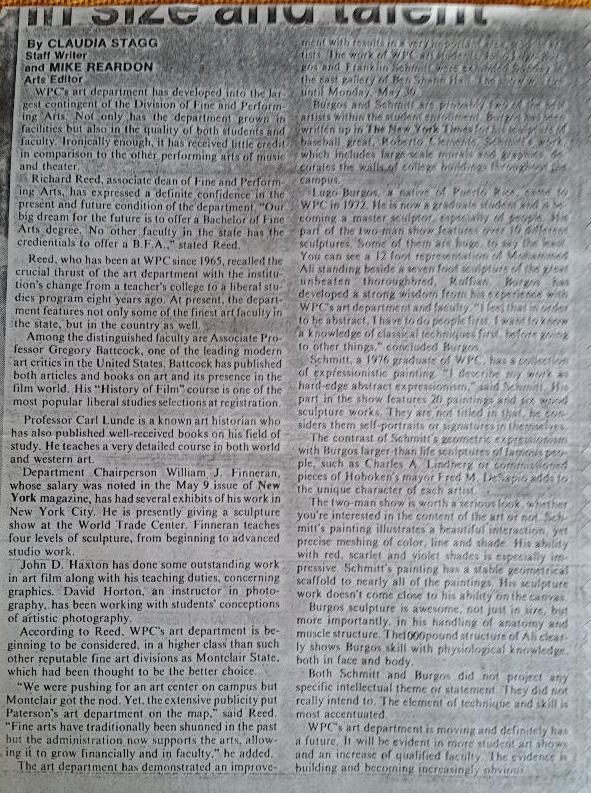
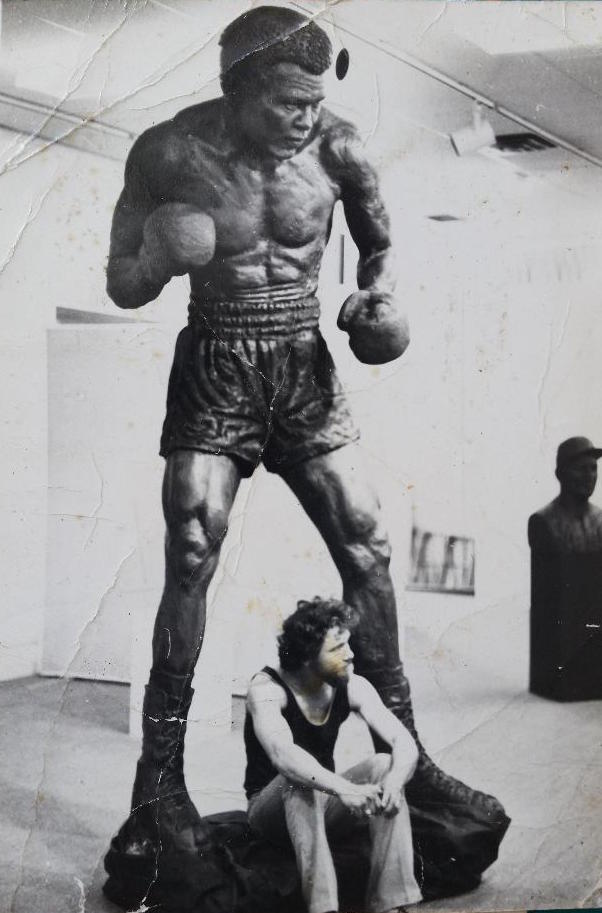
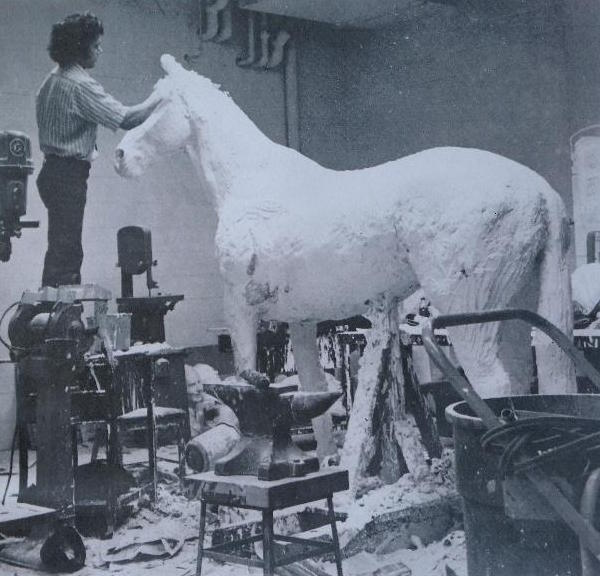
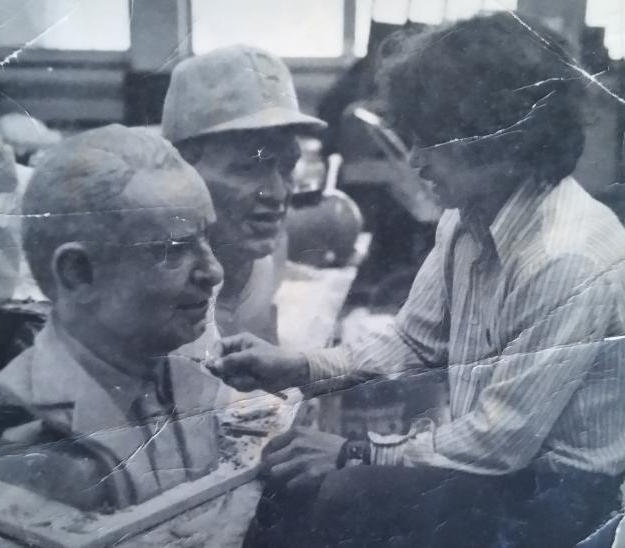
By Claudia Stage & Mike Reardon
WPC’s art department has developed into the largest contingent of the Division of Fine and Performing Arts. Not only has the department grown in facilities but also in the quality of both students and faculty. Ironically enough, it has received little credit in comparison to the other performing arts of music and theater.
Richard Reed, associate dean of Fine and Performing Arts, has expressed a definite confidence in the present and future condition of the department. “Our big dream for the future is to offer a Bachelor of Fine Arts degree. No other faculty in the state has the credentials to offer a B.F.A.” stated Reed.
Reed, who has been at WPC since 1965, recalled the crucial thrust of the art department with the institution’s change from a teacher’s college to a liberal studies program eight years ago. At present, the department features not only some if the finest art faculty in the state, but in the country as well.
Among the distinguished faculty are Associate Professor Gregory Battcock, one if the leading modern art critics in the United States. Battcock has published both articles and books on art and it’s presence in the film world. His “History of Film” course is one of the most popular liberal studies selections at registration.
Professor Carl Lunde is a known art historian who has been published well-received books on his field of study. He teaches a very detailed course in both world and western art.
Department chairperson William J. Finneran, whose salary was noted in the May 9 th issue of New York magazine, has had several exhibits of his work in New York City. He is presently giving a sculpture show at the World Trade Center. Finneran teaches four levels of sculpture, from beginning to advanced studio work.
John D. Haxton has done some outstanding work in art film along with his teaching duties, concerning graphics. David Horton, an instructor in photography has been working with students’ conceptions of artistic photography.
According to Reed, WPC’s art department is beginning to be considered, in a higher class than such other reputable fine art divisions as Montclair State, which had been thought to be the better choice. “We were pushing for an art center on campus but Montclair got the nod. Yet, the extensive publicity put Paterson’s art department on the map,” said Reed. “Fine arts have been traditionally shunned in the past but the administration now supports the arts, allowing it to grow financially and in facult,” he added. The art department has demonstrated an improvement with results in a very important ares, student artists.
The work of student Julio Lugo-Burgos and Franklin Schmitt were exhibited Sunday in the east gallery of Ben Shahn Hall. The show will run until Monday, May 30. Burgos and Schmitt are probably two of the best artists within the student enrollment.
Burgos has been written up in the New York Times for his sculpture of baseball great, Roberto Clemente. Schmitt’s work, which includes large-scale murals and graphics, decorates the walls of college buildings throughout the campus. Lugo-Burgos, a native of Puerto Rico, came to WPC in 1972. He is now a graduate student and is becoming a master sculptor, especially of people. His part of the two-man show features over ten different sculptures. Some of them are huge, to say the least. You can see a 12 foot representation of Mohammed Ali standing beside a 7 foot sculpture of the great unbeaten thoroughbred, Ruffian.
Burgos has developed a strong wisdom from his experience with WPC’s art department and faculty. “I feel that in order to be abstract, I have to do people first. I want to know a knowledge of classical techniques first, before going to other things,” concluded Burgos .
Schmitt, a 1976 graduate of WPC, has a collection of expressionistic painting. “I describe my work as hard-edged abstract expressionism,” said Schmitt. His part in the show features 20 paintings and 6 wood sculpture works. They are not titled in that, he considers them self-portraits or signatures in themselves.
The contrast of Schmitt’s geometric expressionism with Burgos larger than life sculptures of famous people, such as Charles A. Lindberg or commissioned piece of Hoboken’s mayor Fred M. DeSapio adds to the unique character of each artist. The two-man show is worth a serious look, whether you are interested in the content of the art or not.
Schmitt’s paintings a beautiful interaction , yet precise meshing of color, line and shade. His ability with red, scarlet and violet shades is especially impressive impressive. His sculpture work doesn’t come close to his ability on canvas.
Burgos sculptures is awesome, not just in size, but more importantly, in his handling of anatomy and muscle structure. The 1000lb structure of Ali clearly shows Burgos’ skill with physiological knowledge both in face and body.
Both Schmitt and Burgos did not project any specific intellectual thema or statement. They did not really intend to. The element of technique and skill is most accentuated. WPC’s art department is moving and definitely has a future. It will be evident in more student art shows an an increase in qualified faculty. The evidence is building and becoming thoroughly obvious.
